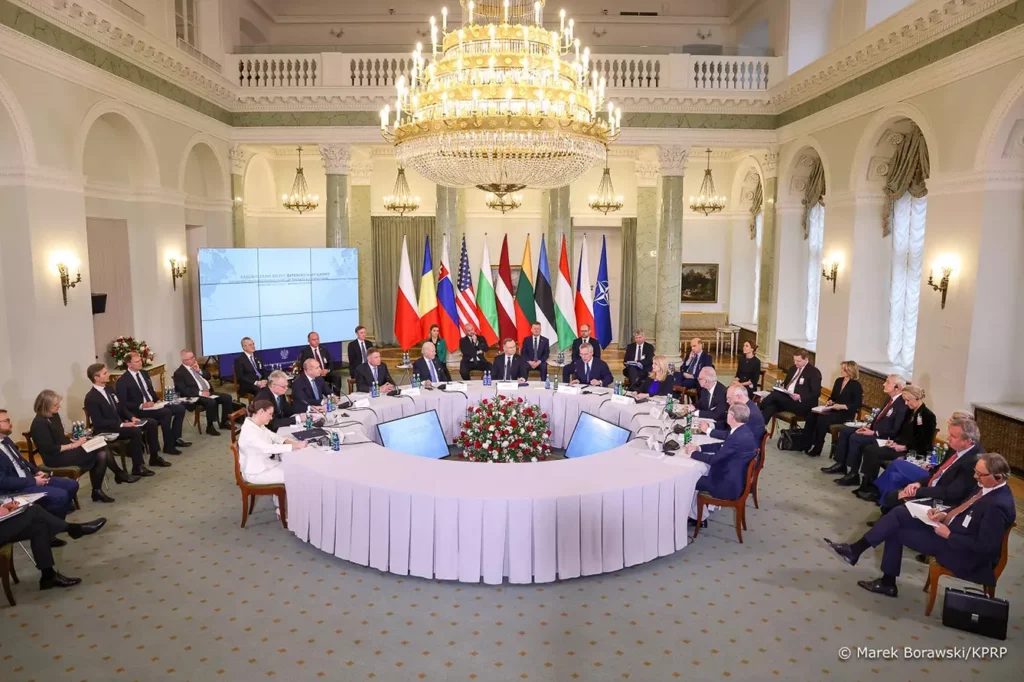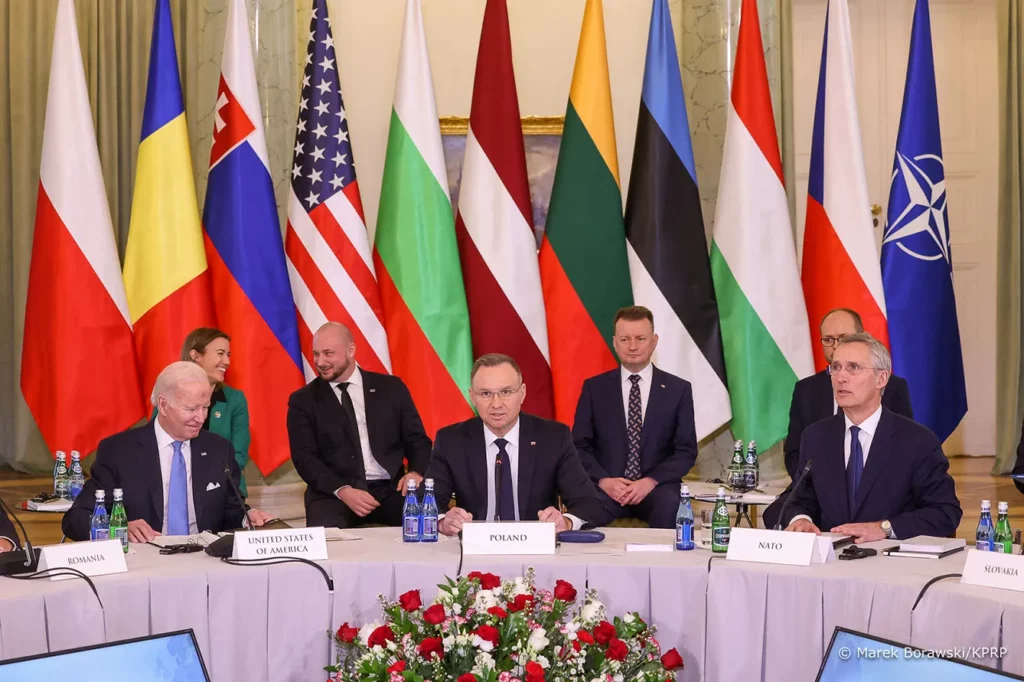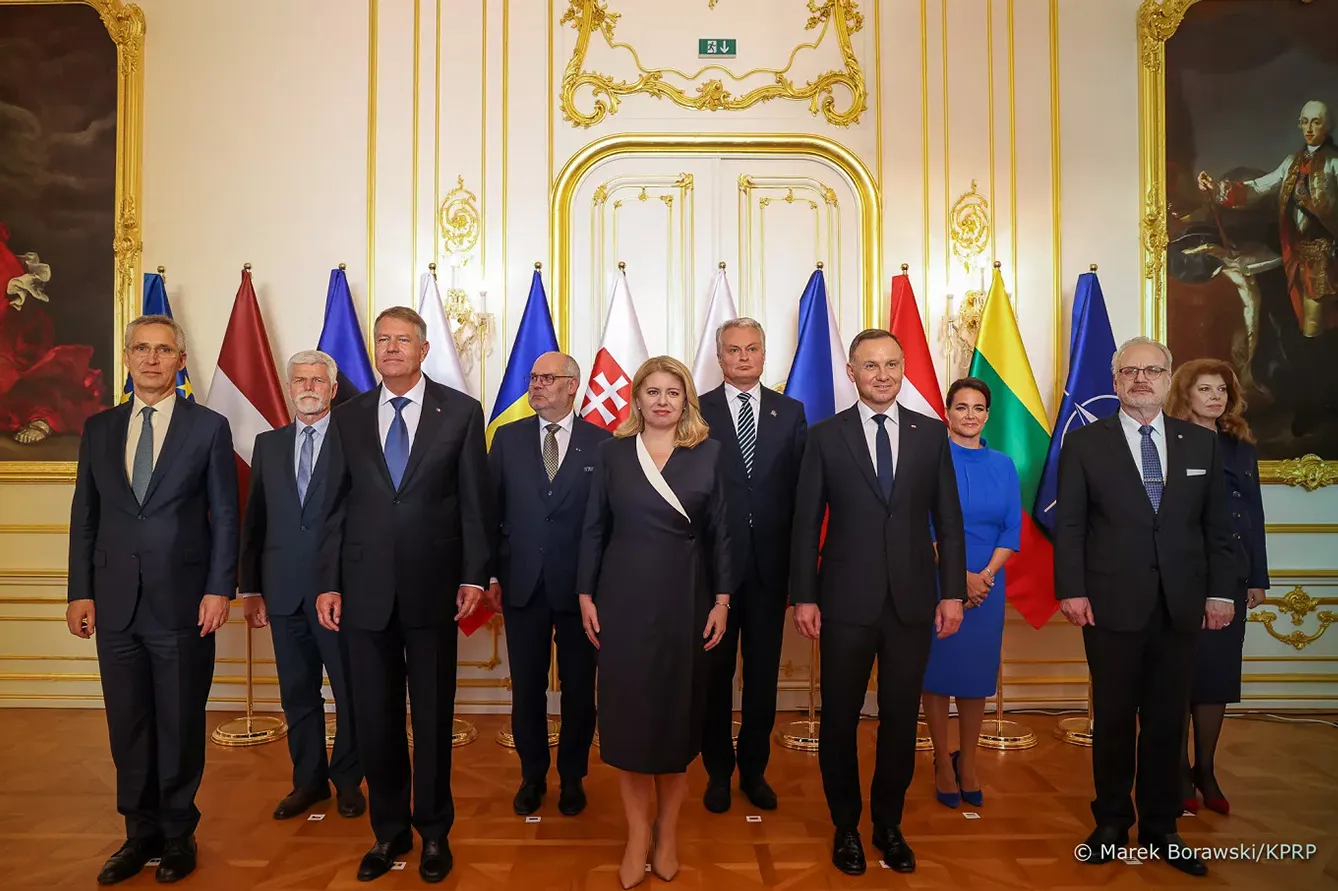Amidst shifting geopolitical and geostrategic landscapes in Europe and its neighborhood, cooperation, and unity became paramount in ensuring regional stability. Hence, the B9 format aspires to enhance predictability across NATO’s Eastern flank, (re)uniting most of the alliance’s smaller powers. From its inception in 2015 as a strategic partnership of states (operating within the NATO framework), the structure has evolved into a well-established watchdog, a platform for cooperation, and a political forum.


Shifting positions
With the increased interference of non-EU actors in the post-communist states’ affairs, CEE authorities have shifted their strategic positions to counteract external influences. Thus, by identifying the need for collective actions, solidarity, and joint projects, Bucharest 9 was spearheaded by two of EU and NATO’s biggest players on the Eastern flank: Romania and Poland.
While the CEE has several notable international organizations, like the Visegrád Group, the Three Seas Initiative, the Central European Initiative, the Baltic Assembly, the Danube Commission, etc., they mostly focus on soft policy projects (socio-economic, cultural, infrastructure, legislative, etc.). However, as leadership lacked in hard policy, the CEE states united under the same banner, aspiring to mitigate risks and enable them to act cohesively.
“We have enhanced the Allied military presence in the Eastern Flank, from the Baltic to the Black Sea, and we are substantially strengthening our posture for deterrence and forward defense, as defensive measures.”
Joint Statement at the Bratislava B9 Summit, June 2023
Therefore, Bucharest 9 includes the Baltic States, V4 members, Romania, and Bulgaria, which banded together to counteract Russkiy Mir (aka the Russian World and its desire to recapture lost territories) and amplify their regional efforts.
Foremost, their collective efforts are aimed at bolstering NATO’s already existing objectives, like pledging to remain above the 2% GDP expenditure rule (with Slovakia, Czechia, and Hungary as the sole exceptions in 2022), conducting joint exercises, and hosting international troops and equipment. Additionally, the organization strives to optimize complementary mechanisms such as increased interoperability, deterrence, research and development, crisis response time, and border control efficiency.
Creating a multilateral dialogue
While these aspects align with NATO’s and the EU’s scope, the B9 organization is creating a multilateral dialogue with CEE stakeholders, adapting solutions to regional realities, and forming a collective front. The latter means that it can either provide a firm response to threats or coordinate political bargaining tools and position leveraging when it needs to negotiate with other interested parties.
For instance, just recently, the B9 and its members took a more assertive stance on the European and global stage in response to regional developments, almost tripling their meetings since the start of the conflict in Ukraine.
This translated into collectively condemning the aggression as a breach of international law (with Hungary signing it even before it did at the EU level), emphasizing the undermining of European security and associated risks to NATO, pleading support for Ukraine’s sovereignty (while also offering various forms of aid) and extended guarantees to Georgia and Moldova regarding their Trans-Atlantic aspirations. Moreover, internally, the organization began strategic planning to operationalize several prospective programs in the face of possible after-effects (migration impact, economic support, Black Sea and Baltic monitoring, etc.)
Paving the way for greater collaboration
To some extent, these early interventions shed light on how the B9 perceives Moscow’s international voluntarism and especially how it aspires to balance it. Additionally, these steps could pave the way for a B9+ framework (as mentioned in the last meetings), which would formalize the interactions with Europe’s broader neighbors, linking together already existing partnerships like the Lublin Triangle (Lithuania-Poland-Ukraine for the latter’s EU adhesion) or the annual Riverine exercises in the Danube (Romania-Ukraine security forces).
Otherwise, the US’s increased communication with the B9 format underscores its interest in strengthening collaboration within the Eastern Flank (some states requesting higher allied contingents while others logistical support or direct funding). To some extent, this involvement reflects the B9’s efficiency in articulating regional perspectives – especially when it comes to convincing Washington and Brussels of the need to prioritize regional programs. While this might be just a reaction to the unfolding events in Ukraine and not necessarily a consolidation of the region, for the moment, the B9 seems to successfully merge the security and defense endeavors across CEE.







